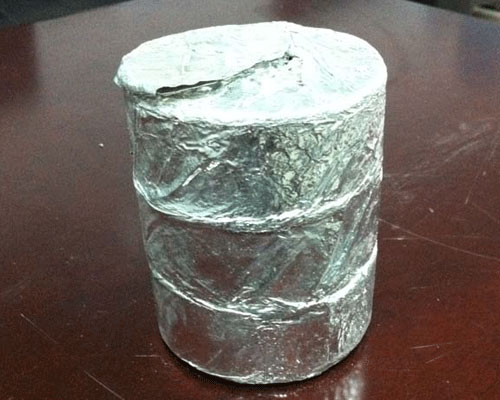The intermediate alloy is based on a metal (such as aluminum, copper, iron, etc.), and add one or more elements. A special alloy can improve the performance of the alloy, which solves the problems that the element is easy to burn, the high melting point is not easy to melt, and the density is large, which is easy to segregate. AdTech offers metal additives, online degassing and CFF filtering systems for Aluminum Intermediate Alloy.
Master Alloy
Master alloy: The main function is to add certain elements to the melt.
1) The melting point is high, such as adding Si, Fe, Cr, Cu, and other elements to aluminum.
2) Volatile burning, such as adding Mg, Ca, and other elements to aluminum.
3) Poor wettability, such as adding B, C, and other elements to aluminum.
4) The density differs greatly, and it is easy to segregate, such as adding Bi, Sn, and other elements to aluminum.
If these elements are added in elemental form, it is necessary to increase the temperature and extend the smelting time, or add excessive amounts to make up for the burning loss. The actual yield is difficult to guarantee, resulting in multiple adjustments of the composition in front of the furnace and affecting the production efficiency.
Grain Refinement Type Intermediate Alloy
Grain refinement type intermediate alloy: the main function is to release a large number of heterogeneous crystal nuclei and refine the alloy grains.
Aluminum alloy grain refinement type intermediate alloys mainly include: Al-Ti, Al-Ti-B, Al-Ti-B-RE, Al-Ti-C, Al-Ti-B-C, etc. Al-Ti and Al-Ti-B master alloys have high cost performance in terms of grain refinement of aluminum alloys, and are currently widely used grain refiners in industry. Due to the dual-phase nucleation of TiAl3 and TiB2, the refinement effect of Al-Ti-B master alloy is better than that of Al-Ti master alloy. However, the TiB2 particles in the Al-Ti-B master alloy have obvious aggregation phenomena. At the same time, when the aluminum alloy contains Zr, Cr, V, Mn and other alloying elements, it will seize the B in the TiB2 particles and form the corresponding Boron compound causes the “poisoning” phenomenon of TiB2 particles, which weakens or loses the effect of the refiner.

Modified Master Alloy
Modified master alloy: The main function is to improve the microstructure of the alloy.
1) The Al-Si alloy has excellent casting performance. With the increase of silicon content, a large number of alloy substrates are cut, the alloy becomes brittle, and the mechanical properties are significantly reduced.
2) When the Si content exceeds 6.0%, the modification treatment is to change the needle, flake, and plate-shaped eutectic silicon and primary crystal silicon into fine and uniform equiaxed crystals, so as to improve the mechanical properties.
Purification Type Intermediate Alloy
Purification type intermediate alloy: The main function is to remove harmful impurities in the alloy. AdTech ceramic foam filter (CFF) can effectively remove the inclusions in the aluminum liquid, and absorb the micro-sized fine inclusion particles. For example, the Al-B master alloy is used for the purification of aluminum. The B element in the master alloy and the impurity elements such as Ti, V, Cr in the aluminum liquid that affect the conductivity form TiB2, VB2, CrB2 and other dense intermetallic compounds, which are deposited at the bottom of the furnace to remove. It needs to purify the aluminum liquid, and improve the conductivity.
Application of Recycled Aluminum
1. Similar to intermediate alloy: Compared with primary aluminum, waste aluminum alloy contains Cu, Mg, Zn, Ti, Fe and other alloying elements, which is equivalent to intermediate alloy. So the melting point is lower and it is easier to melt.
2. Composition adjustment: The use of waste aluminum instead of pure metal can reduce the temperature required for smelting, reduce the volatile burning loss of the metal, and avoid multiple adjustments of the composition in front of the furnace. Compared with primary aluminum, scrap aluminum alloys already contain a certain amount of alloying elements, so fewer metals need to be added. The main problem is the removal of excess alloying elements and foreign impurities.
3. Grain refinement-compared with the original aluminum plus alloy elements: the alloy elements in the waste aluminum alloy are more evenly distributed, the alloy structure is more optimized, and the product performance is more superior. There is a certain grain refinement effect on the waste aluminum alloy which contains Ti element itself. The crystal grains should be finer than the original aluminum, and the demand for the refining agent is not large, even without adding the refining agent.

